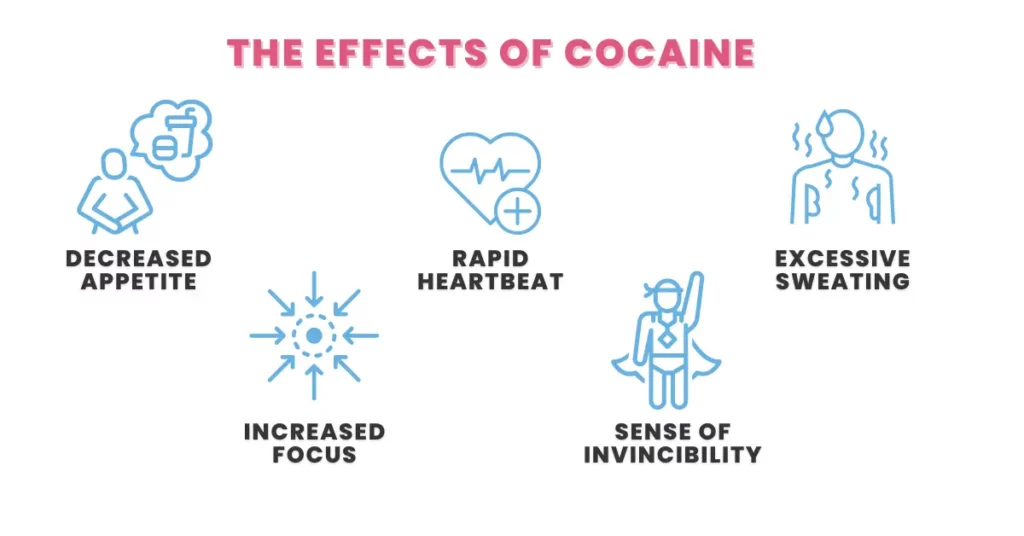Some ask, is cocaine an upper or downer? Most addictive substances can be classified as either “uppers” or “downers.” These labels refer to the chemical and physical reactions that occur while under the influence of a specific substance. Although uppers and downers produce opposite effects, both types of substances are capable of inflicting severe damage to an individual’s health and overall well-being. Frequent cocaine use may prompt individuals to ask the question, “Is cocaine an upper or downer?”
By diving into what cocaine is, the effects of using cocaine, how cocaine is processed by the body, and understanding what an upper and a downer is, we can answer the question.

What is Cocaine?
Cocaine is a powerful central nervous system stimulant drug that is derived from the coca plant, primarily found in South America. It is known for its stimulating effects on the brain and body, leading to increased alertness, energy, and a sense of euphoria. However, it is also associated with a range of negative health effects and can be highly addictive.
Side Effects of Cocaine Use
Cocaine use can lead to a wide range of short-term and long-term side effects, many of which can cause severe health conditions. These effects can vary depending on factors such as the dose, frequency of use, method of administration, and the user’s body composition. Some of the most common side effects of cocaine use may include:
- Euphoria
- Increased heart rate
- Paranoia
- Insomnia
- Lung damage
- Dental problems
- Respiratory problems
The Cocaine High
Cocaine comes in powder form and can be snorted, taken orally, injected, or smoked. Reactions to the drug occur almost immediately and typically last for 15-30 minutes. The use of cocaine results in a high in which the user experiences:
- Decreased appetite
- Increased focus
- Rapid heartbeat
- Excessive sweating
- Sense of invincibility/ grand sense of self

How is Cocaine Processed by the Body?
As a stimulant, cocaine is metabolized rapidly within the body. A cocaine high lasts anywhere from 15-30 minutes, depending on the amount ingested, and feelings of euphoria eventually fade into agitation and fatigue. These unpleasant effects reinforce continued use. Prolonged cocaine use has the potential to inflict serious damage on the organs.
Once the body has ingested cocaine, it moves through the bloodstream and interacts with the neurotransmitter dopamine. This interaction then leads to the sought-after effects of euphoria, increased energy, and heightened alertness that individuals commonly experience.
What is an Upper or Downer?
“Upper” and “downer” are slang terms used to describe two categories of drugs that have opposite effects on the central nervous system.
“Upper” is a term used to refer to drugs that have stimulant effects on the central nervous system. Stimulants increase alertness, energy levels, and cognitive function. Common substances considered uppers are cocaine, amphetamines, caffeine, and Methylphenidate.
“Downer” is a term used to describe drugs that have depressant effects on the central nervous system. Depressants slow down brain activity, leading to relaxation, sedation, and reduced physical and mental activity. Common substances considered downers are benzodiazepines, barbiturates, alcohol, opioids, and cannabis.
Is Cocaine an Upper or Downer?
In short, yes, cocaine is an upper. Cocaine falls under the category of stimulants due to its stimulating effects. Although it was initially marketed as an energy-enhancing supplement, it was banned in the United States in 1922. Despite this prohibition, its popularity surged in the 1970s, particularly as a recreational drug at social gatherings. In recent years, cocaine continues to be a highly trafficked substance globally, securing its place among the top five most hazardous drugs.

We’re Here For You at Knoxville Recovery Center
Being a highly addictive substance, cocaine use is life-threatening if left untreated. Fortunately, help is available for those battling this addiction. Depending on an individual’s addiction stage, they may require detox, an intensive treatment program, or both. Fortunately, Knoxville Recovery Center offers various services to those struggling with this addiction.
Addiction Treatment Services offered
- Detox: Our on-site detox clinic accommodates and supports clients as the body sheds all residual traces of cocaine. Clients are under medical supervision during the detox process to ensure that they remain safe and comfortable.
- Addiction Treatment: During our addiction treatment program, clients will engage in introductory therapies and exercises that work to prepare them for continued, more intensive treatment outside of our facility. The goal of our addiction treatment track is to stabilize clients so that they are treatment-ready.
- Mental Health Treatment: Our mental health treatment program introduces behavioral therapies rooted in self-expression and holistic exercise. Art therapy, music therapy, and yoga are just a few forms of therapy we offer at the center. Our goal is to help the client reclaim their voice and expose them to treatment within a professional facility.
- Aftercare Planning: Aftercare is designed for individuals who have benefitted from our introductory addiction services and are transitioning into a more intensive addiction treatment program. Once a client is stabilized, they will be encouraged to pursue continued addiction treatment. Our experienced case managers will then work with our clients to place them in a program that addresses their specific wants and needs.
Addiction is difficult to overcome alone. If you feel that you or a loved one is struggling with cocaine addiction, our specialists are on standby and ready to help. Call Knoxville Recovery Center and speak with an addiction expert today.








